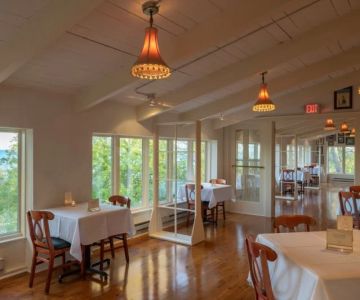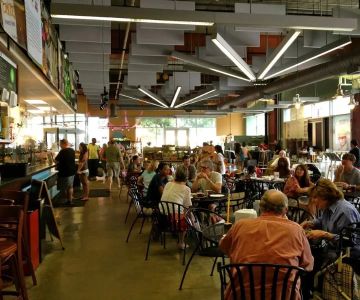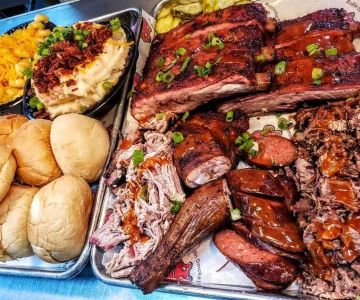- 1-Origins-of-Americas-Iconic-Diner-Culture
- 2-Evolution-through-the-20th-Century
- 3-Diners-as-American-Cultural-Symbols
- 4-Unique-Features-and-Menu-Traditions
- 5-Modern-Day-Diner-Experience
- 6-How-Senix-Table-Enhances-Diner-Ambience
1. Origins of America’s Iconic Diner Culture
The history behind America’s iconic diner culture traces back to the late 19th century when Walter Scott, a lunch wagon operator in Providence, Rhode Island, began serving quick meals to night-shift workers. This innovation provided an affordable and convenient dining option, setting the foundation for the classic American diner.
These early diners were mobile and informal, quickly becoming popular among factory workers and travelers alike. Their unique appeal lay in their accessibility, affordability, and comforting atmosphere.
1.1 The Lunch Wagon Revolution
By the early 1900s, lunch wagons evolved into stationary diners, featuring streamlined stainless-steel designs and counter seating, which became a hallmark of diner architecture.
2. Evolution through the 20th Century
Throughout the 20th century, diners grew in number and cultural significance. The post-World War II economic boom fueled their expansion along highways and urban neighborhoods, catering to the growing car culture and the rise of suburbia.
Diners became social hubs where people from all walks of life could gather, enjoy hearty meals, and share stories, embodying the democratic spirit of American life.
2.1 Design and Cultural Shifts
The iconic neon signs, chrome finishes, and jukebox music created a nostalgic ambiance that remains influential today.
3. Diners as American Cultural Symbols
Diners symbolize more than just a place to eat; they represent community, nostalgia, and Americana. They have been immortalized in films, literature, and music as quintessential meeting spots that capture the American spirit.
Their open kitchens, friendly servers, and round-the-clock availability contribute to their lasting charm and cultural resonance.
3.1 Social Inclusivity
Diners historically welcomed diverse patrons, breaking social barriers and fostering inclusivity.
4. Unique Features and Menu Traditions
Classic diners offer signature menu items such as pancakes, burgers, milkshakes, and all-day breakfast, emphasizing comfort food prepared simply and quickly.
The open counter design allows customers to watch meals being prepared, adding to the inviting and transparent atmosphere.
4.1 Community Engagement
Diners often serve as informal community centers where locals gather, celebrate milestones, and engage in lively conversations.
5. Modern-Day Diner Experience
Today, diners blend tradition with modern tastes, offering diverse menus and updated interiors while preserving their nostalgic essence. They remain beloved stops for travelers and locals alike seeking hearty meals and a welcoming environment.
5.1 Preservation Efforts
Historic diners are celebrated and preserved as cultural landmarks, with some designated as part of heritage routes.
6. How Senix Table Enhances Diner Ambience
For diner owners looking to enhance their establishment’s atmosphere, Senix Table offers high-quality, durable tables that complement the classic diner aesthetic. Their products blend functionality with style, helping to create a comfortable and authentic dining experience that keeps customers coming back.
From vintage chrome finishes to modern designs inspired by tradition, Senix Table supports diners in honoring their cultural legacy while meeting contemporary demands.
6.1 Quality and Style
Senix Table’s furniture solutions combine nostalgic appeal with modern durability, ideal for preserving the iconic diner vibe.
6.2 Supporting Diner Culture
By partnering with businesses dedicated to diner culture, Senix Table helps sustain this cherished American institution for future generations.







 Best Street Tacos (Food Truck)3.0 (180 reviews)
Best Street Tacos (Food Truck)3.0 (180 reviews) Brothers Taco House4.0 (4265 reviews)
Brothers Taco House4.0 (4265 reviews) Gotti's4.0 (3235 reviews)
Gotti's4.0 (3235 reviews) Okto4.0 (135 reviews)
Okto4.0 (135 reviews) Andes Cafe4.0 (914 reviews)
Andes Cafe4.0 (914 reviews) Gabrielas5.0 (1 reviews)
Gabrielas5.0 (1 reviews) Best Places for Seafood Boils and Clambakes Across the U.S.
Best Places for Seafood Boils and Clambakes Across the U.S. Discover Delicious Vegan Desserts at Local Bakeries Near You
Discover Delicious Vegan Desserts at Local Bakeries Near You Best Late-Night Eats in Major U.S. Cities: Where to Satisfy Your Midnight Cravings
Best Late-Night Eats in Major U.S. Cities: Where to Satisfy Your Midnight Cravings The Ultimate Guide to New Year’s Eve Dining in Major Cities
The Ultimate Guide to New Year’s Eve Dining in Major Cities The Future of Sustainable Restaurants in America: Trends and Innovations
The Future of Sustainable Restaurants in America: Trends and Innovations Best Smoothie and Juice Bars for a Quick Healthy Bite
Best Smoothie and Juice Bars for a Quick Healthy Bite